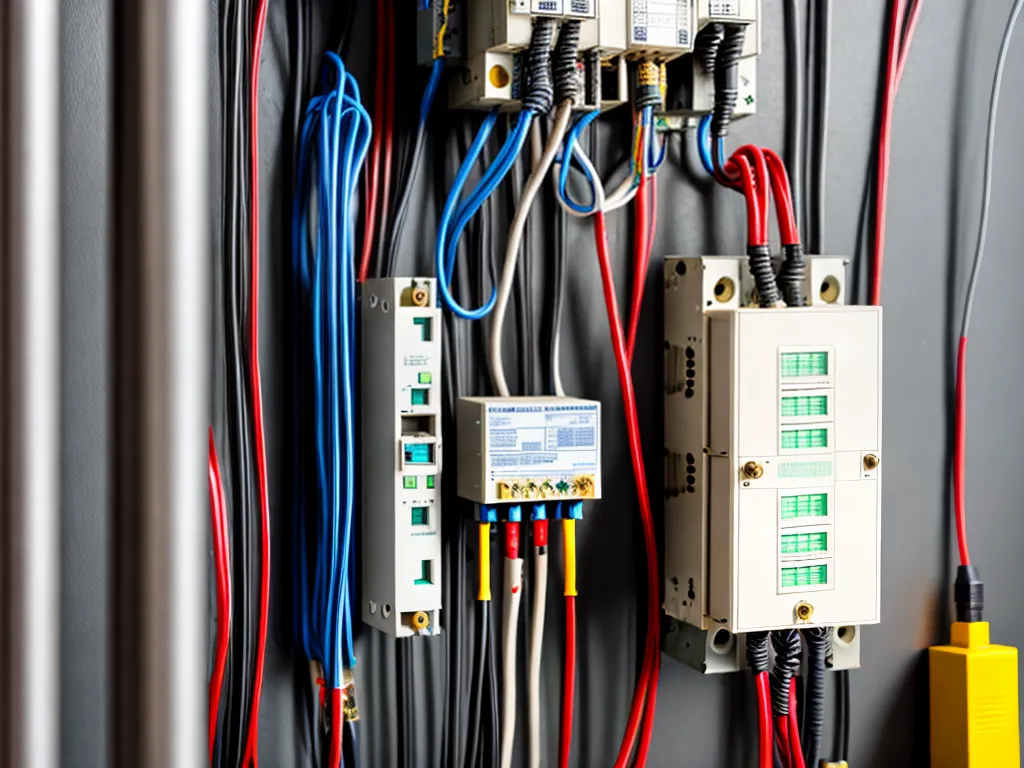
How to Wire a Three-Phase Delta System for a Small Business
Introduction
Wiring a three-phase delta system can provide substantial benefits for a small business by allowing the use of large three-phase motors and other equipment. However, it requires careful planning and execution to ensure the system is properly designed, installed, and maintained. In this guide, I will walk through the key considerations and steps involved in wiring a three-phase delta system for a small business.
Determine Your Power Requirements
The first step is to determine the power requirements for your business. Consider what types of three-phase equipment you need to run and their individual power ratings. This will help size the service and components. Some key factors:
- Size and power rating of motors, welders, or other large equipment
- Number of pieces of equipment to be run simultaneously
- Allowance for future expansion
Add up the ratings to determine the total power you need. Increase by 25% or more for a safety margin. Consider consulting an electrician if you are unsure of your requirements.
Choose a Three-Phase Service Size
Once you know your total power needs, you can determine the appropriate three-phase service size. Common sizes for small businesses are:
- 208/120V 3-phase - Typically 100, 200, 400 amps
- 480/277V 3-phase - Typically 150, 200, 400 amps
The higher voltage 480V systems can power larger equipment. Check with your utility company on availability and costs.
Also consider whether you need 3-wire or 4-wire configuration. 4-wire includes a neutral and allows both 208V and 120V loads.
Install a Three-Phase Distribution Panel
You will need to install a three-phase distribution panel suitable for your chosen service size. Choose a panel with enough spaces for your existing and future circuits. Use a main disconnect breaker panel for safety and convenience.
Hire a qualified electrician if you are not comfortable working with large multi-wire branch circuits. Consider 200% rated neutral conductors for heavily unbalanced loads.
Wire the Three-Phase Feeders
From the distribution panel, you will need to run three-phase feeder wires to different parts of your building.
- Use the correct wire size based on your load current and distance
- Typically 10, 8, 6, 4 AWG for feeders below 400A
- Use THHN/THWN-2 copper conductors
- Run in conduit for protection
Make sure to label each phase wire distinctly. You may also need a neutral and ground wire depending on your system.
Connect the Three-Phase Loads
The final step is connecting your three-phase equipment loads such as motors.
- Match voltage and phase of equipment with your system
- Use appropriate amperage breakers or fuses
- Wire equipment per manufacturer specifications
- Use wire nuts, lugs, or terminals to terminate wires
- Ensure reliable grounding
It is crucial that the loads are balanced across the three phases as close as possible. An electrician can check the wiring and balance the system.
Considerations for Operation and Maintenance
To keep your three-phase delta system running safely and efficiently:
- Monitor that voltage and loads remain balanced on all phases
- Address any tripped breakers or blown fuses immediately
- Periodically check condition of wiring and connections
- Have an electrician inspect the full system annually
Following proper wiring procedures and performing preventative maintenance will allow you to benefit from your investment for years to come. Let me know if you need any clarification or have additional questions!